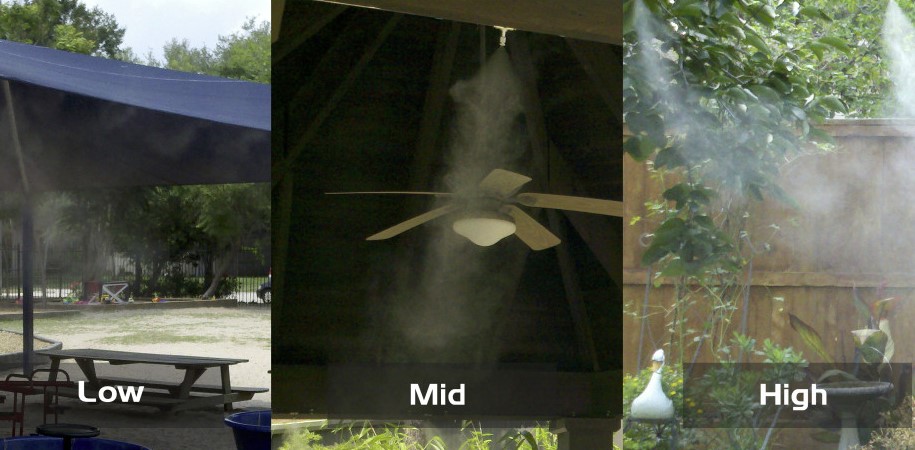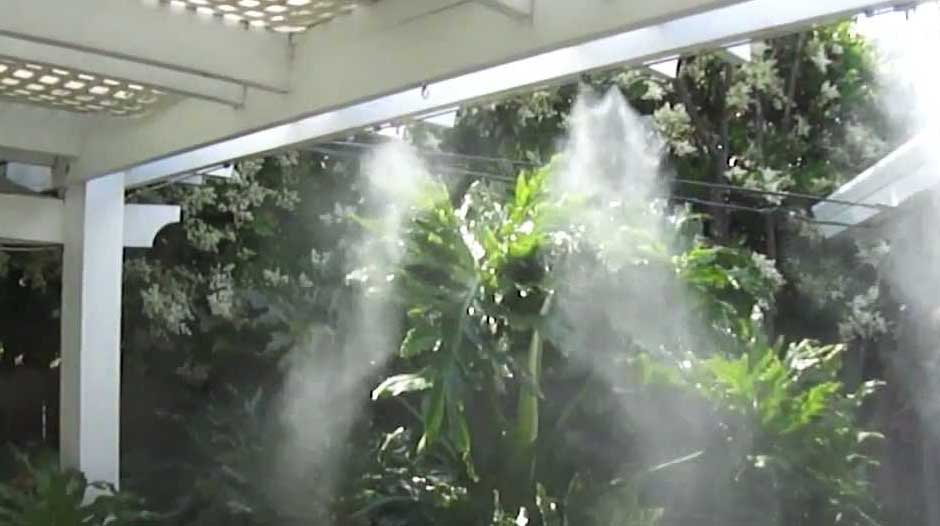Misting systems are very helpful at providing a cool environment during the summer heat. They are also used for dust and pest control. There are various components that make up a misting system, and a pump is one of them.
The cost of the pump is an added expense for users and you may be wondering; do you need a pump for a misting system or your mister will do just fine without it?
To answer this question, it is important you first understand how these misting systems work and the process leading to the cooling mist on the surrounding environment.
Quick answer, If you have low water pressure, you can make do without a pump. If your utility provider delivers low-pressure connections or you get your water from a well without a pressure tank, you will definitely need a pump.
How does a misting system work?
A misting system works by atomizing the water pushed through its lines to form the ultra-small droplets that fill the air. It is these droplets that instantly interact with the surrounding air to absorb the heat and cool it as the water evaporates. To atomize water, it needs to be pressurized and passed through a nozzle which facilitates its dispersion into a spray.
A misting system pump is, therefore, necessary to generate the water pressures required for the atomization process. They come with different pressure ratings, with some below 150PSI, others 300PSI and even 1500PSI for high-pressure systems.
For atomization to occur, you need to use a pump with the right pressure ratings. A 100 PSI, for example, is not adequate for a high-pressure system.
Pro Tip: High water pressure affects the misting system’s flow rate hence how much water it consumes per hour
You also need the right pump for the specific nozzle used in your misting system. Nozzles are normally listed by gallons per hour or gallons per day. The pump you get should provide the adequate pressure and volume required for atomization.
Types of misting systems

Misting systems can be categorized into three main basic types, namely;
- Low-pressure misting systems
- Mid-pressure systems
- High-pressure systems
Whether you are installing an indoor misting system or a patio misting system for your backyard, gazebos or patio, the ideal water pressure for a misting system will depend on your needs. Higher water pressures result in smaller water droplets and faster water evaporation.
High-pressure systems will thus cool the air with almost no wetness, while low-pressure systems cause wetness while cooling. A good example where low-pressure misting systems are used is at the grocery store’s produce section, where the mist needs to be wet to cool and keep the product looking fresh.
If you have low water pressure, you will also be interested in these handheld showerheads designed to work best on low water pressure connections.
Misting pumps come in different shapes and sizes, and you need to get the right one as per your needs. If you do not require lots of pressure, a small misting pump should be able to do the job. A larger pump with higher PSI ratings will, however, be required for high-pressure systems.
The noise level is also an important consideration when buying your misting system pump. For indoor purposes, for instance, you may need a quiet mist pump that makes as minimal noise as possible.
Choosing the right pump for your misting pump can be a headache, especially for those with little information on how these systems work. To avoid overspending on a larger capacity pump you may not require after all, or one that doesn’t generate the right pressure for the system you are running, it is essential you first understand your needs and the type of system you have.

